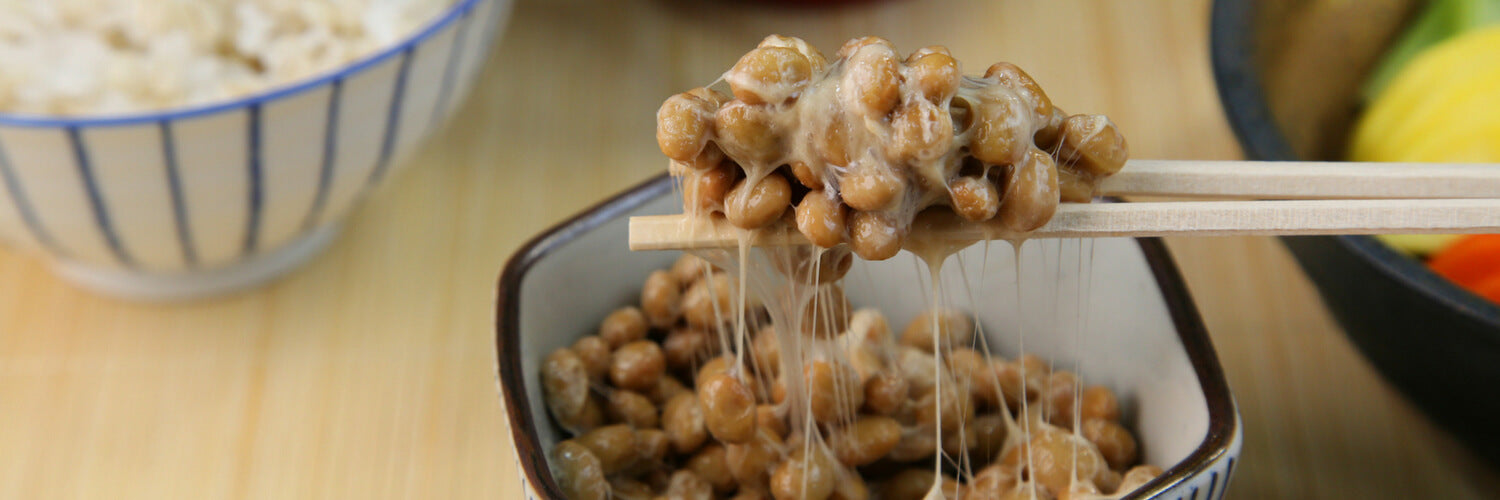
Japanese cuisine relies on natto as a staple breakfast or lunch dish, but many Western palates have not been exposed to this fermented soybean wonder. There are many health benefits to this dish in addition to its additive flavor profile.
We eat with our eyes first. If you’ve eaten Western dishes growing up, you’ve been pries to find crunchy, colorful, crisp, and juicy foods very appetizing. Your food memory can look at these foods and instantly make your mouth water just based on the tastes and textures that you find appealing.
On the same note, this also predisposes people who are used to Western dishes to view dishes that don’t meet this criteria as “strange.” If you saw a bowl full of neutral-colored, slimy, lumpy legumes, your first instinct might be to say, “No thanks!”
If you did this though, you’d be missing out on one of Japan’s most revered foods– natto. Much like an unpasteurized French cheese, ripe durian fruit, or caviar, natto can be an acquired taste, texture, and smell but it is a beloved staple in the Japanese diet. It is truly not your average dish, so let’s take a look at what it is, how it’s made, and its numerous health benefits.
How Natto is Made
Natto is a fermented dish made with cooked, whole soybeans. The bacteria, called Bacillus natto, added to the soybeans is what transforms the soybeans into natto. This is a specialized and healthy bacteria that promotes a healthy balance of enzymes in our stomachs. It is through this fermentation process that this dish gets its sticky texture, pungent smell, and unique taste. The fermentation process can take anywhere from 20-24 hours, as it needs constant heat in order for the bacteria to transform the soybeans. What’s more, these sticky beans can even be made at home.
Superfood Status
Japanese diners see natto not only as a delicious dish, but also as a protein and enzyme packed superfood. During the fermentation process, a natural enzyme called “Nattokinase” is produced which is the science behind its sticky consistency. This enzyme has been linked to blood clot-destroying properties.
One of the most unique properties of natto is that it’s rich in 2 types of vitamin K. Vitamin K1 is typically found in dark leafy greens, and Vitamin K2 is found in certain types of bacteria. Natto contains both K1 and K2, which are great for bone density, heart health, and prevention of calcium deposits in your arteries.
Natto also packs a punch of protein, which is your body’s building block for muscles. If you’re an athlete, or just looking for a dish that will keep your body satiated during the day, natto is a great breakfast to keep you running all day long. Even better?It’s low fat content won’t add unwanted empty calories to your diet.
Give It a Try
Natto is often served as a breakfast food in Japan over rice, with mustard or scallions as a garnish. The next time you see a glutinous, sticky, aromatic, beige bowl of beans, look twice before you look away. Chances are that it could be your new go-to for a protein-packed breakfast, lunch, or snack. If you are not a big fun of the smell of natto, try this freeze-dried natto which exhibits a slight natto taste that can be enjoyed by natto fans as well.
